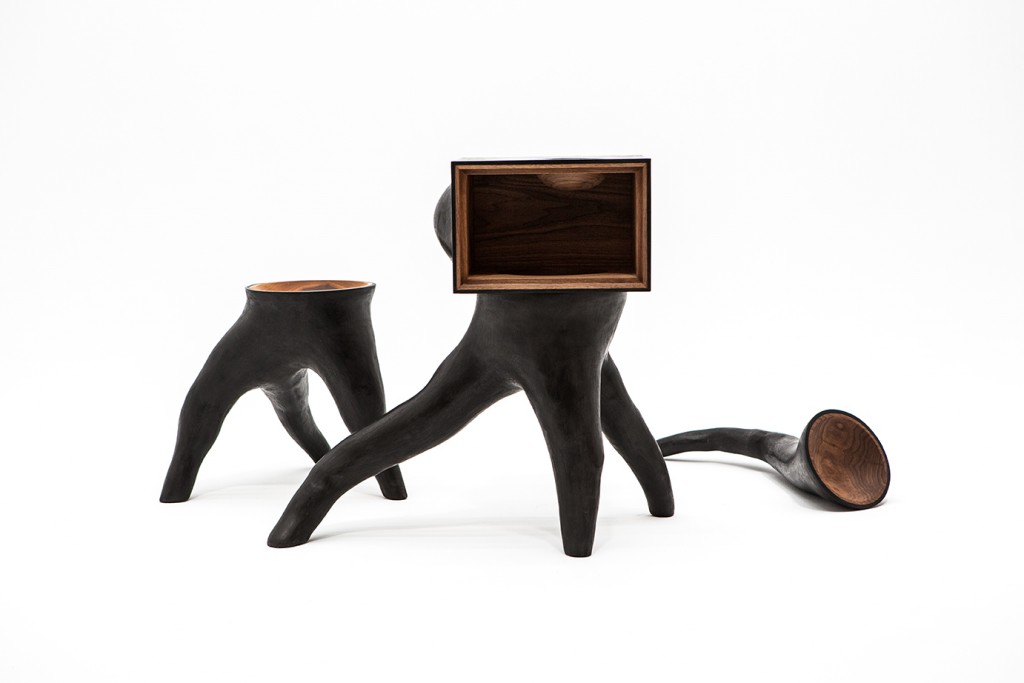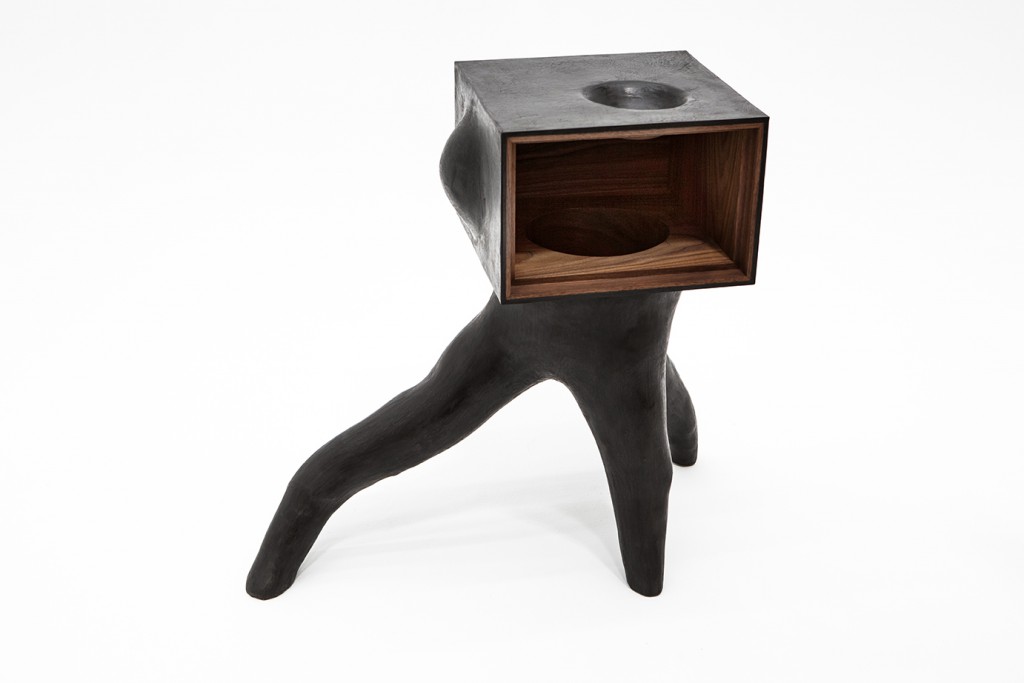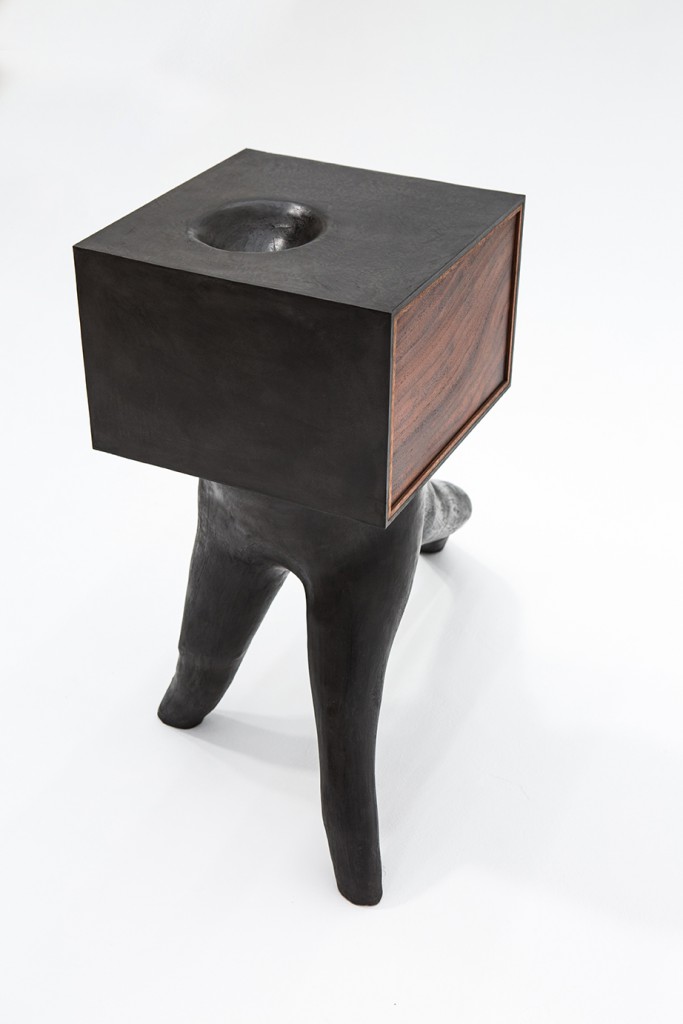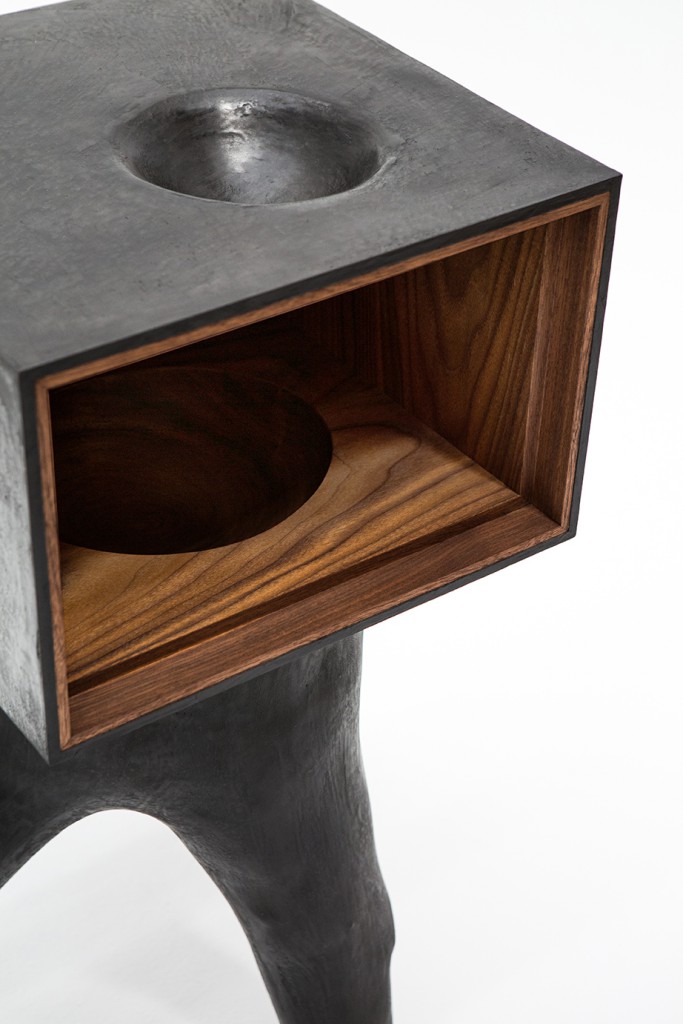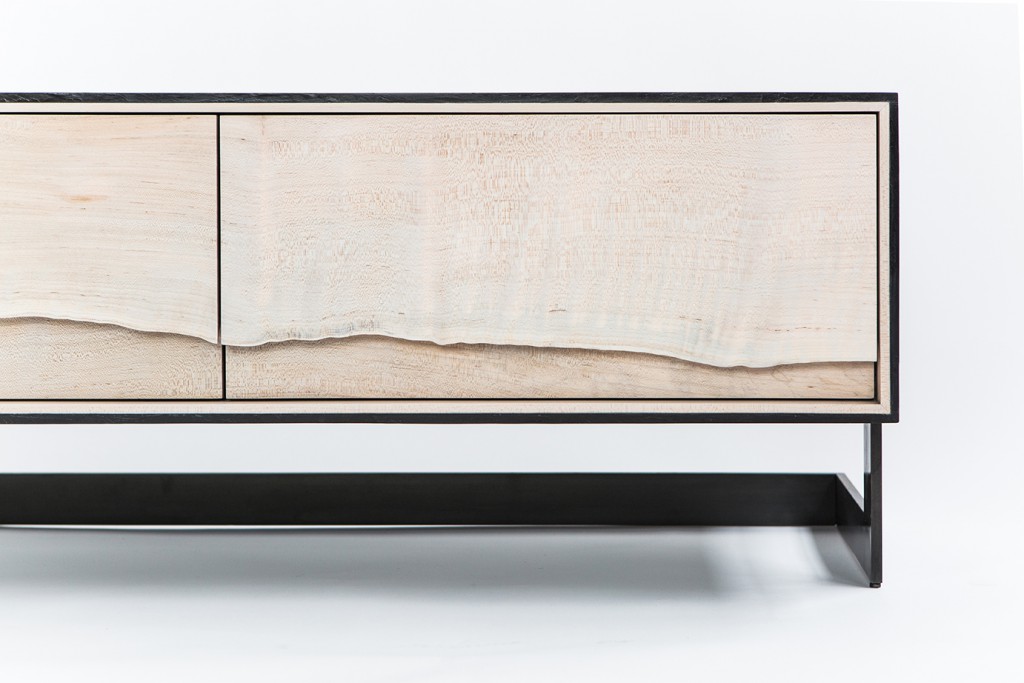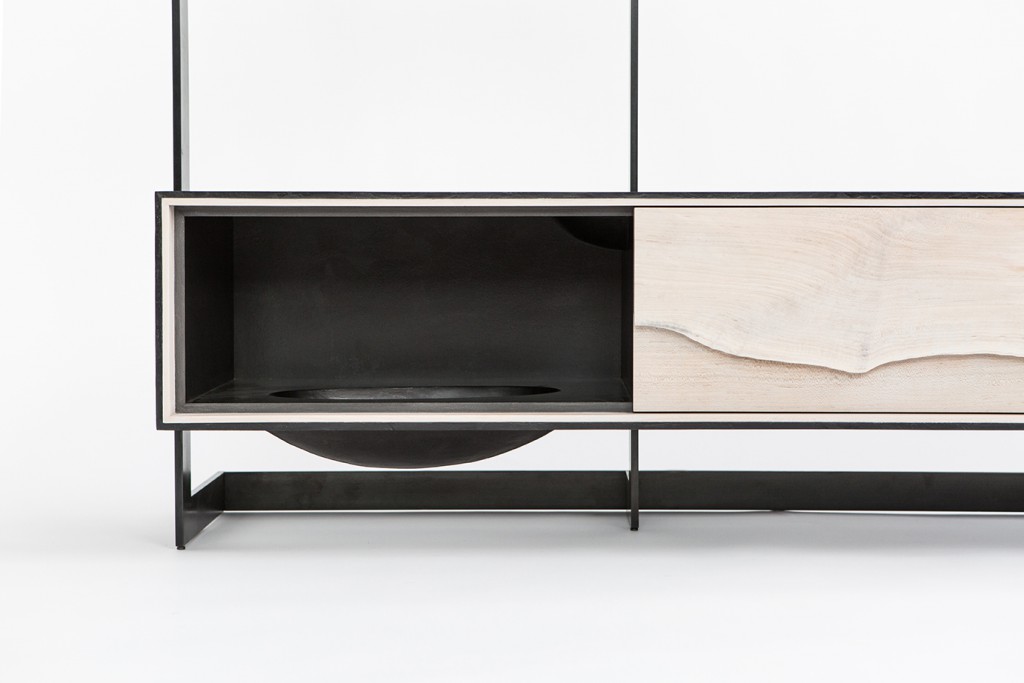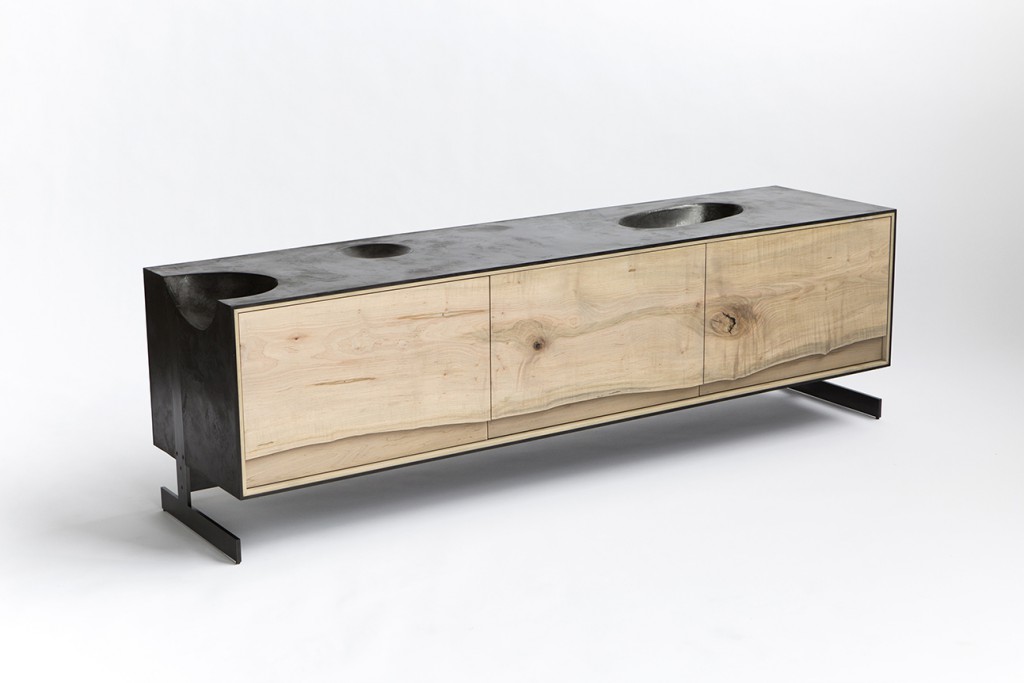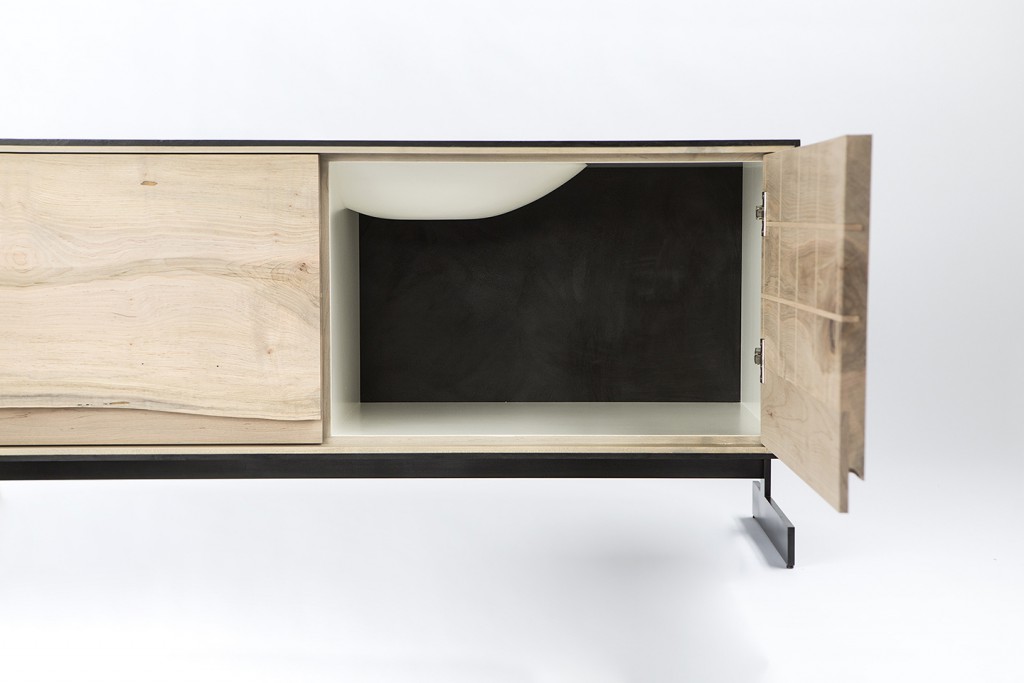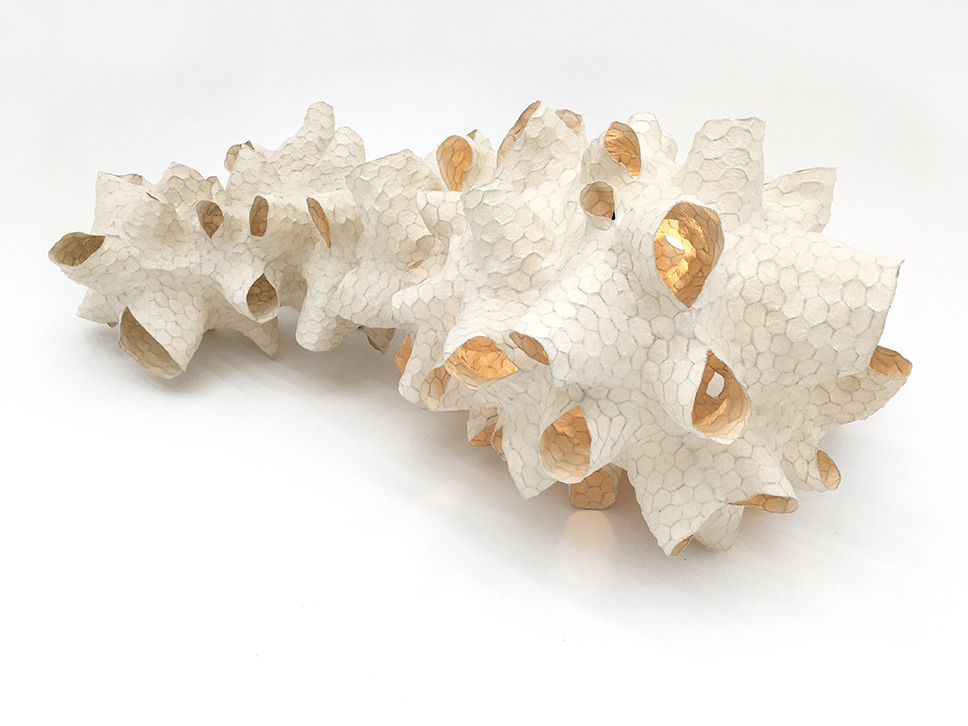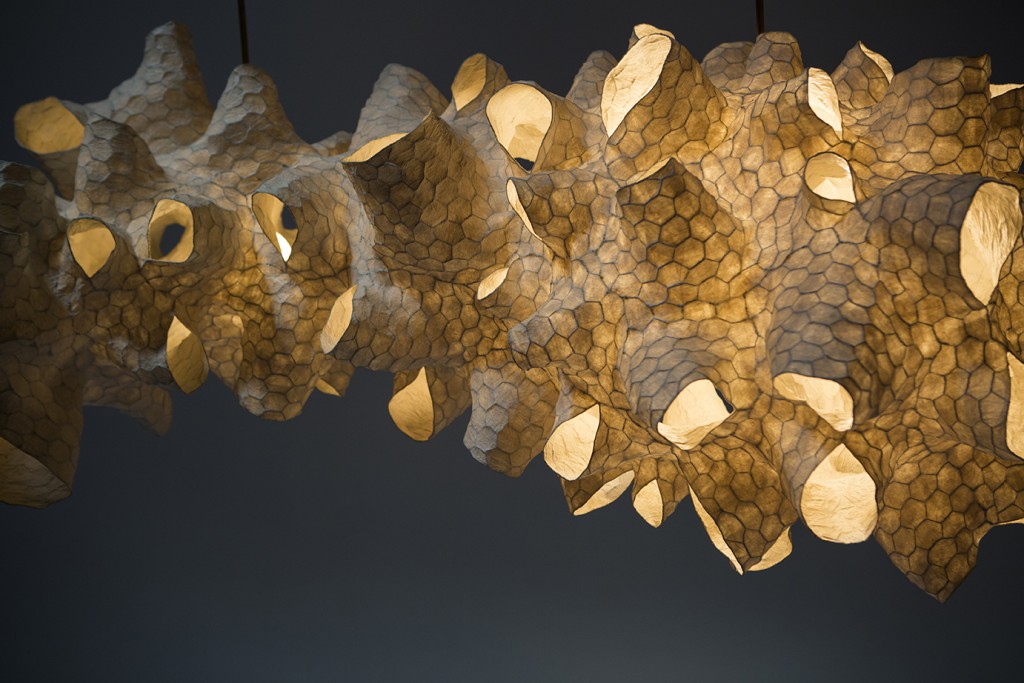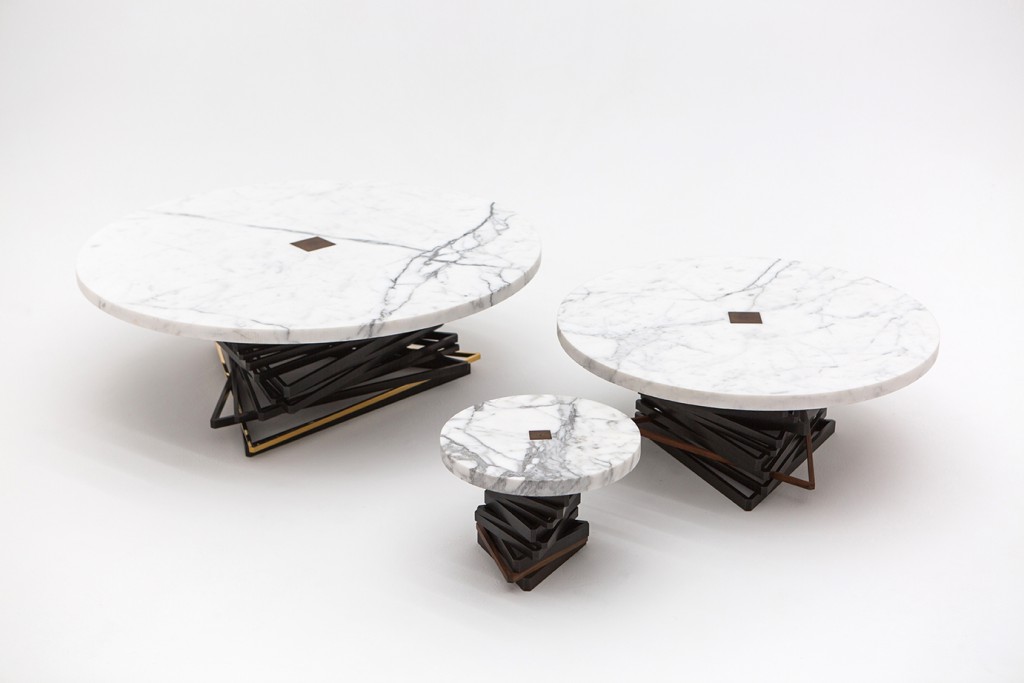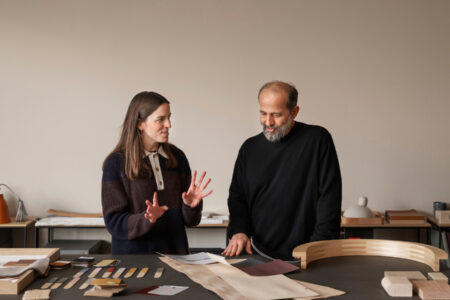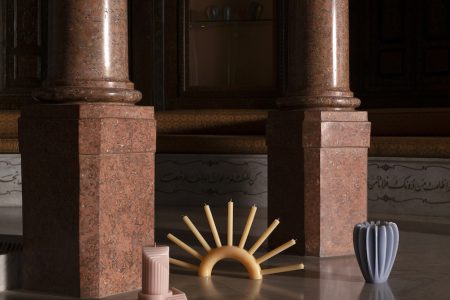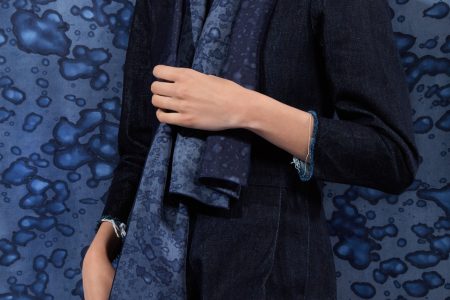Patrick Weder
Brooklyn-based Patrick Weder melds the modernist rationalism, often associated with his native Switzerland, with the volatility of natural material. Sculpting monolithic forms along natural lines, the craft-led designer uncovers primal juts and curves. Framing clean lines and establishing proportioned compositions, he achieves a level of controlled chaos and functional application. The Outside In collection of benches and credenzas employs the natural grain of cladding to create recessed handles. stone-like concave voids work as both embedded bowls and stabilising legs.
Various limited edition furniture and lighting pieces from Weder’s flourishing oeuvre reveal a cultivated interplay between honest handwork and architectural precision; fatalist processes and bespoke expertise. The creative’s latest Sculpture series demonstrates this symbiosis. Cast branch-like arms form the tripodic foundation for a singular cupboard. In other iterations, the base contains a concave void. A sharp contrast between light wood interiors and blackened exteriors transform these works into anthropomorphic beings.
The ever evolving Honeycomb lamps derive from unconstrained experimentation. Matching the hexagonal patterns found in industrially-produced mesh-wiring with semi-translucent layers of paper mache, Weder developed a series of organic sculptures that intersperse apertures within a spherical surface. Finding an apt application for these equally amoebic yet inherently geometric forms, Weber opted for the powerful force of light. Many hang as chandeliers in prestigious New York homes. The craft-led designer’s work can also be found at Fair Gallery in New York and has been shown at the Collective Design Fair, ICFF, and the Architectural Digest Show. In the past, Weder has worked with numerous galleries and studios including, R & Company, Hamiltons Gallery London, Amy Lau, Piero Lissoni, Studio Reed, 2Michaels. His planters feature prominently at Jack Lenor Larsen’s Longhouse Preserve in East Hampton.
